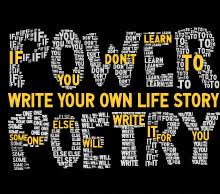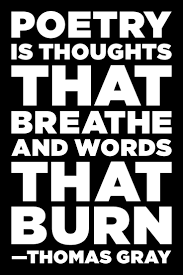Overview
Poetry is based upon aesthetic and rhythmic qualities of language, and exists across all cultures of the world. Some say that poems, like music, came before literacy, and poetic tales made important facts easier to remember. There are hundreds of subtypes of poetry, and some types include narrative poetry, epic poetry, lyric poetry, and free verse.
Rhythm and Meter
Languages, including English, have rhythm. Poets manipulate the natural timing of their language, as expressed by stressed and unstressed syllables, to emphasize the pattern within a poem. For example, Shakespeare often wrote in a rhythm called iambic pentameter, which has five metric feet per line. Think of the rhythm and time signature within a song. Some music has a ¾ or 6/8 rhythm, while others have a 4/4, 7/12, or even other signatures. Similarly, poets have used different types of rhythm and meter, and some do not stick to one meter within a poem.
Repetition
Some of the other ways poets use repetitive patterns is by rhyming words, either at the end of the line or in the middle, in predictable locations. Words may be hard or exact rhymes, such as moon, boon, and noon, or they may be soft, almost-rhyming words, such as wing and caring. Some rhymes are in the reader’s or listener’s imagination, as “This sugar is neat; it tastes so sour.” The reader expects to hear the word sweet and rhymes the word sour. (Perhaps there is lemon juice or vinegar added to the sugar, so it’s a surprise.) Other forms of repetition include alliteration, assonance, and consonance. Alliteration is the repetition of sounds at the beginning of words, such as bike and book, assonance is the repetition of vowel sounds, such as boat and loan, and consonance is the repetition of consonants such as tell and wall.
Form
Poetry is written in many different forms. Classical sonnets have very specific requirements for rhyme and number of lines. A sonnet, by definition, has fourteen lines, and those lines rhyme in a specific pattern. Sonnets have been part of poetry from the 13th century, and Shakespeare wrote many of the most famous ones. A villanelle has nineteen lines that rhyme in a specific pattern and has many refrains. Many types of free verse do not rhyme at all, and poets experiment with new forms daily. Some modern poets experiment with the forms of words to create an actual picture.
Genres
Poets have used many different genres throughout the ages. Narrative poetry passed down stories, sometimes in the form of ballads. Epic poetry told the adventures of heroes. These genres were used to pass down knowledge and belief through the generations, and some predated written language, or was a valuable tool when many people could not read. Lyric poetry, rather than tell a story, depicts inner feelings, moods, and desires.
Interested in English tutoring services? Learn more about how we are assisting thousands of students each academic year.
SchoolTutoring Academy is the premier educational services company for K-12 and college students. We offer tutoring programs for students in K-12, AP classes, and college. To learn more about how we help parents and students in Paradise, NF, Canada: visit: Tutoring in Paradise, NF



